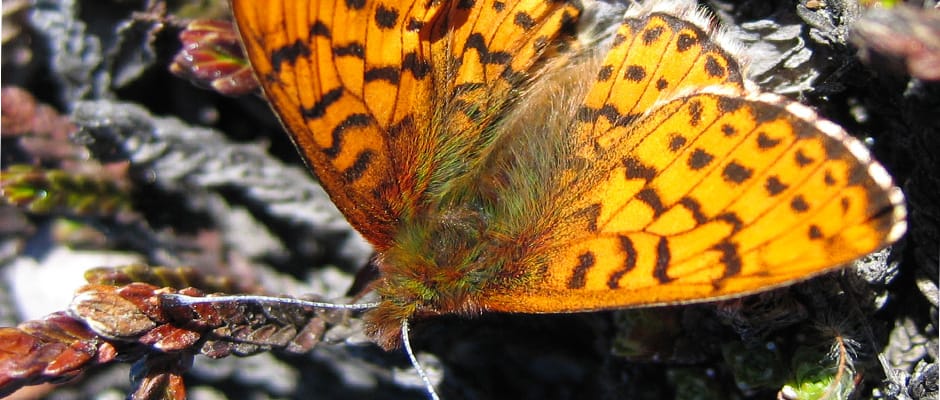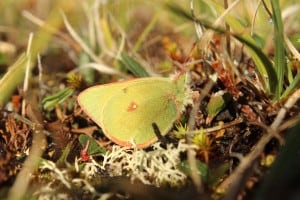Share this article
Warm Arctic Weather Could Be Shrinking Butterflies
Butterfly size may be affected by warming Arctic temperatures, according to a new study.
“Our studies show that males and females follow the same pattern and it is similar in two different species, which suggests that climate plays an important role in determining the body size of butterflies in Northeast Greenland,” said Toke Hoye in a release. Hoye is a senior scientist of the Aarhus Institute of Advanced Studies in Denmark’s Aarhus University and an author of the new study published in Biology Letters.
Researchers measured wingspans of approximately 4,500 male and female butterflies of two different species of butterflies in Greenland, collected every year from 1996 and 2013 at the Zackenberg Research Station in the northeast of the island.
They found that wingspans of both the northern clouded yellow (Colias hecla) and the Arctic fritillary (Boloria chariclea) have decreased significantly and at the same rate in response to the region’s warming summers.
Warmer temperatures may result in some species getting larger due to longer feeding seasons. But others, like the larvae of these butterfly species, may experience increased metabolism that causes them to use more energy than they can regain from feeding. This, in turn could cause them to shrink in size.
“We humans use more energy when it is cold, because we must maintain a constant body temperature,” Hoye said. “But for butterfly larvae and other cold-blooded animals whose body temperature depends on the environment, the metabolism increases at higher temperatures because the biochemical processes are simply faster.”
These smaller larvae eventually convert into smaller adults, which may not be able to fly as far due to limited wingspans.
“These butterfly species are under pressure from multiple sides. They live so far north that they cannot move to cooler regions, and they will probably disappear from the southernmost part of their range due to the warming temperatures,” Hoye said.
“In addition, their dispersal capacity is deteriorating, and smaller body size may result in lower fecundity, so these Arctic species could face severe challenges in response to ongoing rapid climate change.”
Header Image: The Arctic fritillary. Image Credit: Toke T. Hoye









